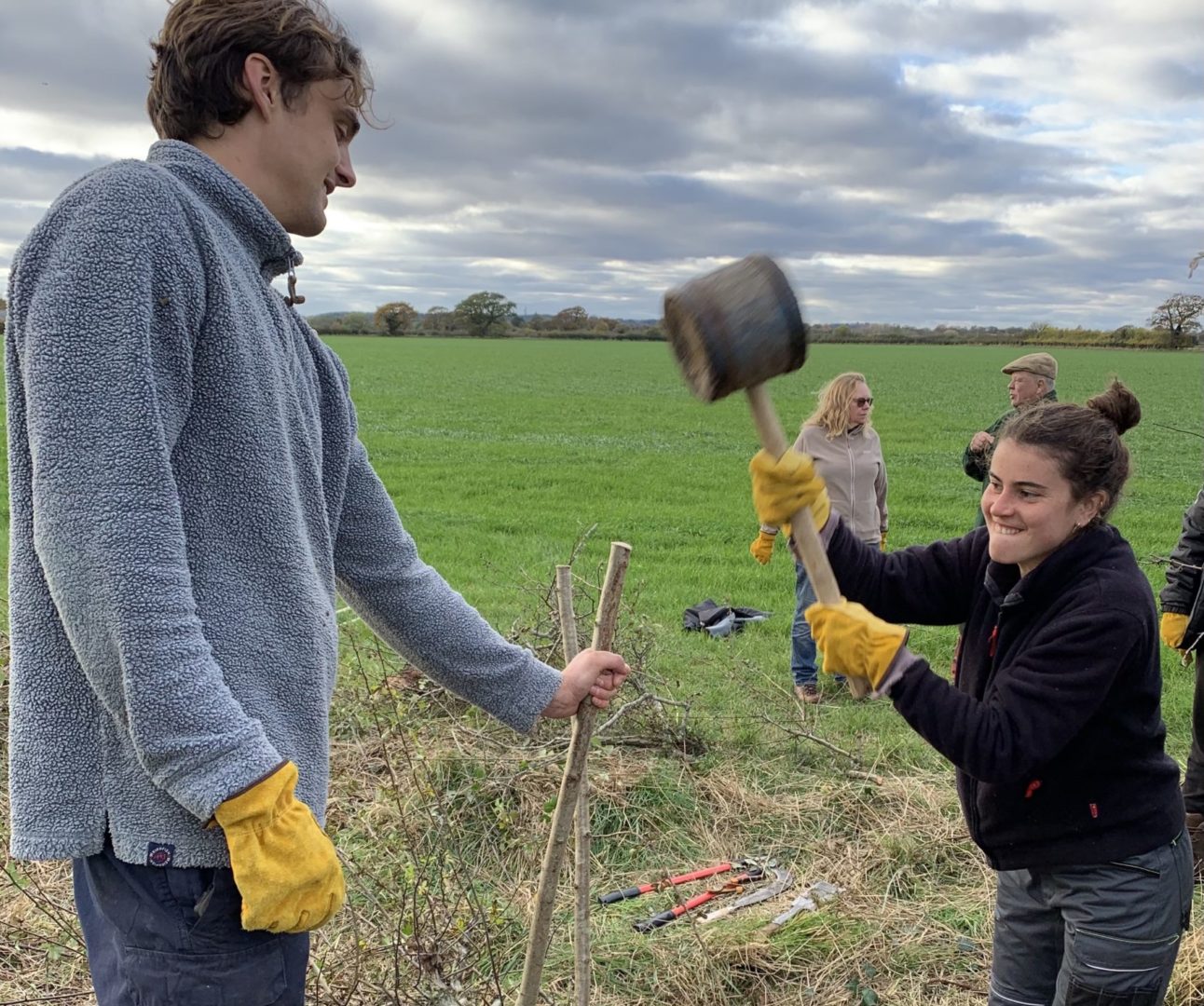What being a Hedgerow Heroes volunteer has really been like

Hedgerow Heroes and what it’s like being a volunteer. Report from Ellie Banks.
Ellie Banks was a volunteer on the first phase of the CPRE Hampshire Hedgerow Heroes initiative. She is now employed by CPRE Hampshire to work on project co-ordination of Phase II – details of which to be released soon. Here she talks a bit about the history of hedgerows, the Hedgerow Heroes initiative and what it’s like to be a volunteer.
Local CPRE’s across the country have recently been running hedgerow restoration projects, known as Hedgerow Heroes, in an attempt to address the growing issue of habitat fragmentation across England. Since the industrialisation of farming and the pressure to maximise yields during WWII, the British landscape has been drained, cleared and 50% of hedges ripped out.1 Taking up 70% of land2 in the UK, agricultural land is now dominated by huge fields and insufficiently maintained hedgerows, 60% of which are badly managed with little consideration for wildlife.
CPRE Hampshire’s Hedgerow Heroes project has involved reinstating historical hedges from old maps and restoring existing hedgerows by gapping up and laying the hedges. Engaging with the local community, training a group of volunteers and working with two local schools, CPRE Hampshire have been able to raise awareness of the importance of hedgerows to wildlife, farming and for tackling climate change.
I thoroughly enjoyed my own involvement in the project and being able to be involved in various aspects as much as I liked. Speaking to some of the 12 other volunteers, I asked them how they felt the project has gone and why they got involved.
For some, first and foremost was the desire to learn new skills that they could come away with and put to use.
“I applied to CPRE to learn new skills. Hedges being an important wildlife habitat they need to be preserved and also reinstated. This was an opportunity to find out how to assess hedgerows and discover how they could be treated to provide wildlife corridors, food and shelter.” Ann
We were taught how to assess the health of hedgerows by the People’s Trust for Endangered Species, following the Great British Hedgerow Survey method, learning what makes a hedgerow valuable for both wildlife and for farmers. The data collected is part of a nation-wide effort to understand the state of our hedges as a whole and therefore inform conservation efforts to restore them.
“The assessment was taught very well so that it was really understandable.” Ann
We were also trained by a Hampshire and Isle of Wight Wildlife Trust ecologist to carry out pollinator surveys, creating a baseline of data so that once the gapping up, planting and laying had been done, the improvements to this priority habitat and benefits to the local wildlife can be more fully understood. Gaining training and experience in carrying out butterfly and bumblebee transects, contributing to the ongoing citizen science work, is vital to inform conservation and policy change across the country.
The opportunity to learn a new practical skills, to lay hedges using traditional tools by a local hedge-laying expert, was particularly valued by the volunteers.
“Learning to lay hedges is a brand new skill for me which I hope will be useful in the future.” Ann
For myself, I have really enjoyed learning to lay the old hedges, using traditional tools such a Yorkshire and a Billhook. The physical work has been really rewarding and I look forward to doing more soon.
Not only have I, and the other volunteers, come away with new skills to use and share, volunteering in the project has also provided some of the fieldwork and practical experience that is required to get a foot in the door when applying for jobs in the competitive conservation sector.
“Getting involved with the Hedgerow Heroes project was a really important part of my journey into the conservation sector. Learning key practical conservation tasks like hedge-laying and surveying techniques were both really interesting and skills I have carried forward into my new job with a National Park Authority (also something my volunteering experience with CPRE helped me to get!).” Bertie
It was also highlighted that working as a group on a project from start to finish was particularly rewarding, as well as this providing time enough to get to know and learn from one another.
“Working with others is great as everyone had helpful experience or knowledge to impart.” Ann
“It was lovely work alongside a group of friendly people.” Bertie
“I hope we did a useful job on the Meyrick estate as I certainly learned a lot from working there” Ann
For me, it has been an immensely satisfying project, where we have worked from start to finish, transforming the hedgerows in the area. We have been able to contribute to the restoration of hedgerows, something urgently needed across the UK, and in doing so, address so many issues, all with the simple yet talented hedge! Biodiversity loss, carbon emissions, over-use of pesticides, soil erosion and our own physical and mental health to name a few. To get a taste of an ancient craft, that is sure to be needed more and more in the coming years, has been a pleasure indeed.
1) Hedge fund: executive summary (cpre.org.uk)
2) Agriculture: historical statistics (parliament.uk)
Report by Elle Banks, May 2022



